| RP401R |
The newer RP501R ($1499US internet price) and F140R ($1199US internet price) are the identical pianos to each other except for cabinet design and control panel layout. The RP501R comes with a bench whereas the F140R does not come with a bench. Also, the RP501R and F140R are nearly identical to the previous models RP401R and F130R with the exception that the newer models use bluetooth wireless whereas the older models used regular WiFi with a WiFi adapter. Functionality, sound chip, key action, cabinet, pedals, are all the same on the new models as they were on the old models. In other words, except for a small bit of “tweaking” to the speakers and adding bluetooth connectivity, all these pianos are the same and have been upgraded very little in the new models except for a slight price drop. Please read my review of the newer model F140R at the following link: Roland F140R Review.
PREVIOUS REVIEW of RP401R & F130R – RECOMMENDED – Continuing with the older RP401R and F130R Review: These two digital pianos are the latest in a series of RP & F model pianos that Roland has produced over the years. I have played all the Roland RP & F series pianos since they came out and I must say that these two models are noticeably better than the previous RP301 & F120 models that were discontinued quite awhile ago, and the 401R is even money than the previous 301/301R model…which is always a good thing for the consumer. The lower priced models look better, sound better, play better, have more useful features, and are just overall much more satisfying and inspiring to play than previous models.
 |
| F130R compact piano |
The actual differences between the RP401R and the F130R (now discontinued) is the cabinet design & construction, control panel layout, and bench. The 401R has the more traditional sturdier furniture cabinet design with a semi back privacy panel available in an attractive satin black or satin rosewood. The discontinued F130R has the smaller compact cabinet design, no privacy panel, available in satin black and satin white. The RP401R has a larger, more traditional music rack along with built-in music rack holders that flip up from the piano to hold open music book and sheet music pages…a very cool feature. The 401R also has a metal sliding key cover which works well and fits all the way back inside the piano when the key cover is opened. The F130R has an integrated fold down key cover that also acts as a music rest for the music (and/or iPad) when the fold down top is opened , which I do not like near as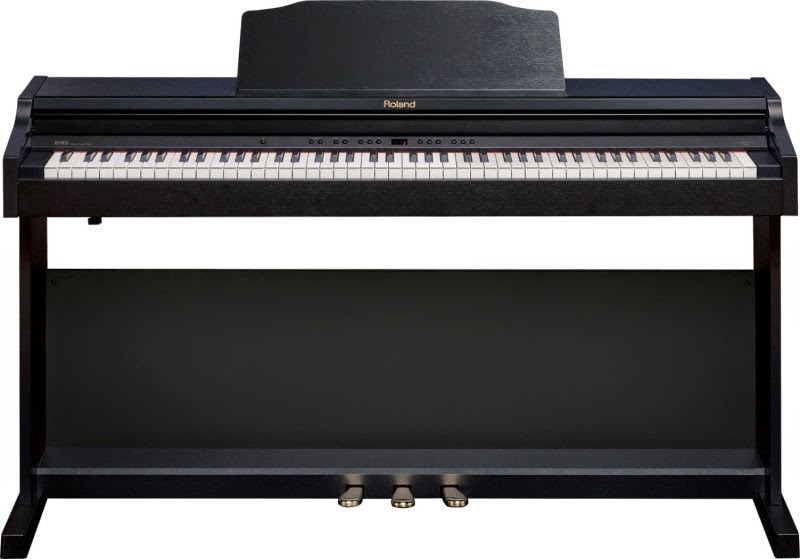 as the traditional RP401 music rack although the F130R cover is sturdy and functional and is good for its compact size, but sheet music will not be at the standard correct height. The F130R key cover can also fold down flat across the top of the piano when the piano is not in use. The control panel buttons on the RP401R are directly in front of you above the center of the keys which make it easier to see and use, which I like. The F130R has the control buttons all the way to the left side above the left keys which is a somewhat inconvenient place to access them, but this is true of some other digital pianos as well. However, this was likely necessary to accommodate the compact F130R compact cabinet style with the fold-down cover and overall the button operation works well. The RP401R comes with a Roland matching piano bench (with music storage inside) and the F130R does not come with any Roland bench. So for the money, I think the RP401R is the better buy over the F130R, unless you need or want the F130R compact cabinet design and modern styling. In that case the F130R would be a good option.
as the traditional RP401 music rack although the F130R cover is sturdy and functional and is good for its compact size, but sheet music will not be at the standard correct height. The F130R key cover can also fold down flat across the top of the piano when the piano is not in use. The control panel buttons on the RP401R are directly in front of you above the center of the keys which make it easier to see and use, which I like. The F130R has the control buttons all the way to the left side above the left keys which is a somewhat inconvenient place to access them, but this is true of some other digital pianos as well. However, this was likely necessary to accommodate the compact F130R compact cabinet style with the fold-down cover and overall the button operation works well. The RP401R comes with a Roland matching piano bench (with music storage inside) and the F130R does not come with any Roland bench. So for the money, I think the RP401R is the better buy over the F130R, unless you need or want the F130R compact cabinet design and modern styling. In that case the F130R would be a good option.
So what is it that makes these two new models worth considering? First of all, Roland finally got it right in this price range and has produced a very good hammer weighted graded piano key action, acoustic piano sound, and pedaling realism that surpasses what I expected from them in this price range. Their RP401R/F130R key action is completely redesigned from the previous model RP301/RP301R/F120 and is called Standard Keyboard action, which is far better than the previous Ivory feel-G action. However, key movement is a bit firm and could be fatiguing for the hands/fingers when played over a longer period of time as compared to other models It does have graded weighting on all keys including improved touch weight (how much finger pressure needs to be exerted on a key in resting position), but as I said it is noticeably on the firm side of weight. The synthetic ivory feel material on the keytops is nice so overall the key action is a nice improvement.
The previous ivory-G key action in the RP301/F120 was very noisy/thumpy when the keys struck the bottom when playing a bit harder as well as being sluggish when playing slowly and softly, and that was very irritating to me. Roland has dramatically improved this new key action by decreasing the key noise to an acceptable level and also taking away the sluggish key movement, and I was happy to see that. There is no question that the new Standard Action has risen to a new level. It is important to note that the new Standard action is not as good as the key actions in the higher priced Roland HP digital pianos over $2000 such as the HP603 & HP605, but that is certainly to be expected. When I say not as good that simply means that although the F130R/RP401R has a good key action in this price range, you can get Roland pianos with key actions that are upgraded beyond that for even more authentic key movement. So if you want or need an even higher level of key action authenticity (generally a smoother and slightly lighter touch), look at the the higher priced Roland HP series pianos.

 When it comes to actual acoustic type piano sound, Roland has a 128-note polyphony sound chip which they call SuperNATURAL Piano. The Super natural piano sound in Roland digital pianos has been around in previous models but is different depending on the models. There are three different qualities or levels of this SuperNATURAL piano sound in the various models of Roland pianos which I call “good, better, and best.” The RP/F series piano sound is good, the more expensive HP504/506 piano sound is better, and the top of the line HP508/LX15e (now discontinued) piano sound is best. Roland really should have specific names for these 3 levels of SuperNATURAL sound, but they don’t…possibly just to confuse everyone…which I believe they do:). However, an experienced piano player like myself can hear the difference and I am happy to report that the 401R/F130R sound realism has been improved over the previous RP301/F120 sound chip, and it’s quite noticeable. It is more balanced and sonically smooth with more organic changes in tone color across the entire 88 keys, and it doesn’t have the drawbacks of the previous models, so that the piano sound upgrade really impresses me.
When it comes to actual acoustic type piano sound, Roland has a 128-note polyphony sound chip which they call SuperNATURAL Piano. The Super natural piano sound in Roland digital pianos has been around in previous models but is different depending on the models. There are three different qualities or levels of this SuperNATURAL piano sound in the various models of Roland pianos which I call “good, better, and best.” The RP/F series piano sound is good, the more expensive HP504/506 piano sound is better, and the top of the line HP508/LX15e (now discontinued) piano sound is best. Roland really should have specific names for these 3 levels of SuperNATURAL sound, but they don’t…possibly just to confuse everyone…which I believe they do:). However, an experienced piano player like myself can hear the difference and I am happy to report that the 401R/F130R sound realism has been improved over the previous RP301/F120 sound chip, and it’s quite noticeable. It is more balanced and sonically smooth with more organic changes in tone color across the entire 88 keys, and it doesn’t have the drawbacks of the previous models, so that the piano sound upgrade really impresses me.
 The dynamic tonal and volume range of expression of the acoustic piano sound is quite large and has been noticeably improved over the previous models (which I just mentioned) when playing very soft gentile music to a more aggressive loud piece of music. This is due to the newPHAIV key electronics and this is also true of the higher priced Roland models over $2000US. With this new upgraded key action the sensing of key repetition has also been improved because Roland has 3 electronic key sensors per key so that more advanced players can play complex music which requires faster note repetition and allows for more noticeable musical expression. However with certain notes played on the keyboard, the piano sound can get somewhat brassy or sharp (twangy) in my opinion when playing at higher velocities with fortissimo (loud dynamics) and this is true on any of the RP401/F130R/F140R piano sounds. Some people may like this type of tone and some people may not like it as much, it just depends what you want and the music you’ll be playing.
The dynamic tonal and volume range of expression of the acoustic piano sound is quite large and has been noticeably improved over the previous models (which I just mentioned) when playing very soft gentile music to a more aggressive loud piece of music. This is due to the newPHAIV key electronics and this is also true of the higher priced Roland models over $2000US. With this new upgraded key action the sensing of key repetition has also been improved because Roland has 3 electronic key sensors per key so that more advanced players can play complex music which requires faster note repetition and allows for more noticeable musical expression. However with certain notes played on the keyboard, the piano sound can get somewhat brassy or sharp (twangy) in my opinion when playing at higher velocities with fortissimo (loud dynamics) and this is true on any of the RP401/F130R/F140R piano sounds. Some people may like this type of tone and some people may not like it as much, it just depends what you want and the music you’ll be playing.

Piano pedals and pedaling ability on digital pianos is also very important and should not be overlooked whether you are a beginner or advanced player. The most important pedal is the right damper/sustain pedal because that’s where 95% of the pedaling happens for most beginners through recreational players. The other two pedals (soft & sostenuto) are used in much less degrees depending on the type of music being played and your pedaling skill level. Roland offers what it calls continuous detection electronics for the damper and soft pedal which means that it will allow for more incremental damper sustain time and soft tonal changes when
pressing the pedals down or letting them up instead of just on or off changes the way other digital pianos work. Some piano companies have the half-damper sustain pedal electronics which also give a great range of sustain for the right damper pedal which is very good depending on the brand. I especially like continuous detection and half-damper control for more advanced players or students who are progressing in their playing skills. When I was trying out the damper sustain pedal I noticed two things which made the sustain sound more realistic. One of these things was a damper resonance feature giving the piano tone a natural organic sound such as what you would hear in acoustic pianos, along with a much longer sustain/decay time allowing for longer natural decay instead of shorter pedal decay times found in cheaper off-brands.
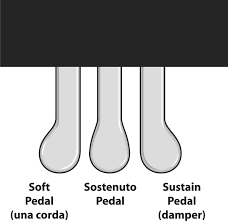 Natural pedal sustain/decay time is how long the sound takes to fade out after striking keys and letting them go while holding the right damper/sustain pedal all the way down. The longer the “damper/sustain pedal decay time,” the better and more natural your music will be. On some digital pianos under $2000 that I have played (and I have played them all), the amount of damper pedal decay time is typically not very much when holding down the right pedal after playing some keys, especially the keys/notes on the right side of the keyboard. Those are the treble notes on the right side of the keyboard and they fade out the fastest (because they are shorter strings in a real piano while the left keys (bass notes) have the most/longest fade-out time because they are longer strings. This is a very big deal because real acoustic piano strings keep resonating for awhile after a key has been played
Natural pedal sustain/decay time is how long the sound takes to fade out after striking keys and letting them go while holding the right damper/sustain pedal all the way down. The longer the “damper/sustain pedal decay time,” the better and more natural your music will be. On some digital pianos under $2000 that I have played (and I have played them all), the amount of damper pedal decay time is typically not very much when holding down the right pedal after playing some keys, especially the keys/notes on the right side of the keyboard. Those are the treble notes on the right side of the keyboard and they fade out the fastest (because they are shorter strings in a real piano while the left keys (bass notes) have the most/longest fade-out time because they are longer strings. This is a very big deal because real acoustic piano strings keep resonating for awhile after a key has been played
 in the normal playing range with the pedal held down, and a digital piano really needs to get close to that time to offer a natural piano sound playing experience. It takes advanced sound/pedal decay time technology in a digital piano to allow the longer pedal sustain/decay time to take place. The Roland RP401R & F130R has more natural pedal sustain/decay time including a natural volume reduction over that time, depending which notes are being played. That is substantially longer and smoother than some of the other digital pianos out there and is an important element not to be overlooked when shopping for any piano. If you are a beginner student then the better pedal technology will mean very little to you. But as the student progresses in the playing ability or you are already at an intermediate playing skill level or higher, that pedaling sustain time technology will become very important and these new Roland pianos will definitely rise to the occasion, although there are other digital brands that do a very good job too..
in the normal playing range with the pedal held down, and a digital piano really needs to get close to that time to offer a natural piano sound playing experience. It takes advanced sound/pedal decay time technology in a digital piano to allow the longer pedal sustain/decay time to take place. The Roland RP401R & F130R has more natural pedal sustain/decay time including a natural volume reduction over that time, depending which notes are being played. That is substantially longer and smoother than some of the other digital pianos out there and is an important element not to be overlooked when shopping for any piano. If you are a beginner student then the better pedal technology will mean very little to you. But as the student progresses in the playing ability or you are already at an intermediate playing skill level or higher, that pedaling sustain time technology will become very important and these new Roland pianos will definitely rise to the occasion, although there are other digital brands that do a very good job too..
The middle sostenuto pedal is so seldom used that Roland has also given a person the ability to control various functions of the piano by triggering them with the middle pedal such as on/off drum rhythm function, into/endings, fill-ins, and other things which give a more professional ability to using these extra features. The middle pedal can still trigger the traditional sostenuto function, but it also does these other things too. The bottom line is that full size pedals are important in the way they move, feel, their height position on the piano, and their ability to recreate the actual acoustic piano pedaling experience, and to me that’s something I look for in a digital piano. If the student is a beginner or very small where their feet cannot reach the pedals yet (little kids), then the more advanced pedaling of these new Roland pianos is irrelevant, but later on you will likely be glad you have it:).
If the new more advanced key action, piano sound, and pedaling functions was all that were in these new pianos, they would still be very competitive with other brands, but there is so much more these pianos can do. Let’s start with the instrument sounds and related features. First of all there is a total of 316 instrument tones in each of these two piano of which there are 4 primary acoustic type piano sounds in a button called “piano” along with some layered piano sounds, harpsichord, honk tonk, etc, tones. In the other sound buttons there is a large selection of strings, choirs, electric pianos, mallets, church/pop/jazz organs, voices, harps, guitars & banjos, accordions, bass, synthesizers, horns, reeds, woodwinds, special effects environmental sounds, and more in another access button called “other.” These sounds are higher quality tones not necessarily found in some other brands. However, some of the tones do sound a bit fake but that is true for the other brands as well in many cases.
On the control panel a bright LED display screen reads out info on these various sounds and other features which helps you know what sound or function is being used. You can combine two sounds together to create a layered sound and can also split the keyboard into a left and right section wherever you choose, and then assign one sound to the left hand and another sound to the right hand (such as piano on the left hand and harpsichord on the right hand for some interesting classical music), or an upright bass and cymbal on the left hand and a grand piano on the right hand for a bit of jazz, all of which is fun to do. There are also preset sound layers already built-in (such as grand piano and string symphony) which is quite nice, so that you can combine a preset layer like that one with another individual instrument sound and get 3 sounds at one time. That’s a very cool thing because it gives such fullness to the overall sound to have three instruments playing at one time with every key that you touch. You may not use that type of feature often, but I personally like it, especially when trying to reproduce orchestral instrument combinations.
One of the more fun things these pianos offer is the Roland intelligent interactive chord ensemble styles. This kind of function goes way beyond just having drum rhythms or simple accompaniment sounds. The Roland interactive rhythm & chord accompaniments actually sound like real band arrangements including drums, guitars, bass, keyboards, horns, etc that you would hear a live band play. They sound like the real thing instead of toy-like sounds that you would find on some other brands of digital pianos and keyboards. With this new interactive chord accompaniment system, you control the band with the chords you play on the left hand and the right hand. This is not a new feature since all the major brands have a system like this including Yamaha, Kawai, and Casio. What makes this one unique some of the flexibility you have with adding or subtracting parts of the band playback chords as well as controlling relative volume with your right hand melody line so one does not overpower the other.
 You can use the intelligent accompaniments in three different ways. The first way is you can electronically split the 88 keys into two parts wherever you choose on the keyboard, and then you play a 3 finger (or more) chord on your left hand and play a melody with your right hand to go along with the left-hand chord, and the result is that you sound like you are playing in a band, only you are controlling and determining the song you’re playing. A second way of using the feature is to play 1-finger (root note) left hand intelligent chords if you don’t know anything about playing piano at all so even beginners can have fun. This intelligent chord feature is great for beginners (it makes you sound better than you are:) and its also great for accomplished players who can play full chords like me because it adds an entire live band to whatever music I want to play with both hands using as many fingers as I want. I’ve got to say that I was very impressed with the musicality and complexity of these accompaniment chord patterns and the fact you could also control other aspects of the intelligent chords by taking out or muting the actual instruments, bass line, or drum rhythms, or a combination of two or more of those functions while you’re playing the chord.
You can use the intelligent accompaniments in three different ways. The first way is you can electronically split the 88 keys into two parts wherever you choose on the keyboard, and then you play a 3 finger (or more) chord on your left hand and play a melody with your right hand to go along with the left-hand chord, and the result is that you sound like you are playing in a band, only you are controlling and determining the song you’re playing. A second way of using the feature is to play 1-finger (root note) left hand intelligent chords if you don’t know anything about playing piano at all so even beginners can have fun. This intelligent chord feature is great for beginners (it makes you sound better than you are:) and its also great for accomplished players who can play full chords like me because it adds an entire live band to whatever music I want to play with both hands using as many fingers as I want. I’ve got to say that I was very impressed with the musicality and complexity of these accompaniment chord patterns and the fact you could also control other aspects of the intelligent chords by taking out or muting the actual instruments, bass line, or drum rhythms, or a combination of two or more of those functions while you’re playing the chord.
 When playing chords in the split mode (left hand/right hand), it recognizes the proper bass line no matter what inversion of the chord you are playing (root, 1st inversion, 2nd inversion), and that makes the song you’re playing sound musically correct all the time. Prior Roland piano models could not do this so it’s a nice improvement. There is a 3rd way of using interactive intelligent chord accompaniments playing your music wherever your hands are on the keyboard without you splitting the keyboard into two distinct parts and having to keep your left hand on the left side all the time. With this method, which is useful for more advanced players, the bass line will follow the outline of the chord inversion and play those notes rather than root position notes in the normal accompaniment split position. This feature is called “leading bass” and for those of you who don’t know what I’m talking about, don’t
When playing chords in the split mode (left hand/right hand), it recognizes the proper bass line no matter what inversion of the chord you are playing (root, 1st inversion, 2nd inversion), and that makes the song you’re playing sound musically correct all the time. Prior Roland piano models could not do this so it’s a nice improvement. There is a 3rd way of using interactive intelligent chord accompaniments playing your music wherever your hands are on the keyboard without you splitting the keyboard into two distinct parts and having to keep your left hand on the left side all the time. With this method, which is useful for more advanced players, the bass line will follow the outline of the chord inversion and play those notes rather than root position notes in the normal accompaniment split position. This feature is called “leading bass” and for those of you who don’t know what I’m talking about, don’t  worry about it because it really won’t matter to you in using this interactive chord feature. The advanced players will appreciate this 2nd way of using the accompaniments because then you can determine the bass line by the chord structure and play keys anywhere on the piano without constraint. One thing is for sure, you’ll have fun no matter how you choose to use this new intelligent accompaniment system. You can also change key and transpose the right hand instrument sounds as well as interactive chord accompaniments so that you can play in a key more conducive to your singing range for singalong, or if you just want to modulate to a different key to change it up a bit. One downside to the transpose function is that you need to go into the editing menu to get that to happens and make changes. Roland should have had a dedicated transpose button on the control panel for easier access as some other digital pianos do because going into the editing menu is not intuitive to get to the transpose feature to work.
worry about it because it really won’t matter to you in using this interactive chord feature. The advanced players will appreciate this 2nd way of using the accompaniments because then you can determine the bass line by the chord structure and play keys anywhere on the piano without constraint. One thing is for sure, you’ll have fun no matter how you choose to use this new intelligent accompaniment system. You can also change key and transpose the right hand instrument sounds as well as interactive chord accompaniments so that you can play in a key more conducive to your singing range for singalong, or if you just want to modulate to a different key to change it up a bit. One downside to the transpose function is that you need to go into the editing menu to get that to happens and make changes. Roland should have had a dedicated transpose button on the control panel for easier access as some other digital pianos do because going into the editing menu is not intuitive to get to the transpose feature to work.
 |
| F130R control panel buttons |
When it comes to recording and playback of songs on the RP401R/F130R, these 2 models do a very good job and offer both audio wav file playback of songs (which is CD quality sound) as well as MIDI recording & playback and this MIDI recording function can be very good to have for educational and practice purposes. The MIDI recording feature allows for 1-track recording and playback to occur and you save your recording onto a USB flashdrive inserted under the left side bottom of the piano keyboard. You can then load that recording onto your computer hard-drive and use it in a number of ways to playback your songs and also insert into notation
 or recording software The MIDI recorder does not actually record sound but only the notes played. The MIDI instrument sounds comes directly from the instrument, computer, or MIDI device it is played through. However, MIDI song playback tempo can be easily changed from fast to slow as well as the transposed key it’s playing back in as opposed to audio recordings that are not able to be manipulated in that way. MIDI playback songs are available on the internet to buy and download and they number in the thousands and I have personally used MIDI files (songs) for years professionally as well as to help my piano students understand music better. All of the Roland digital pianos can do something that few digital pianos can do and that’s having the ability to play complete General MIDI files which I talk more about later in this review.
or recording software The MIDI recorder does not actually record sound but only the notes played. The MIDI instrument sounds comes directly from the instrument, computer, or MIDI device it is played through. However, MIDI song playback tempo can be easily changed from fast to slow as well as the transposed key it’s playing back in as opposed to audio recordings that are not able to be manipulated in that way. MIDI playback songs are available on the internet to buy and download and they number in the thousands and I have personally used MIDI files (songs) for years professionally as well as to help my piano students understand music better. All of the Roland digital pianos can do something that few digital pianos can do and that’s having the ability to play complete General MIDI files which I talk more about later in this review.
![]() On the down side of the recording features, I would liked to have seen a 2-track MIDI recorder built in to these new models instead of just the one track so that you could record left & right hand independently and play them back independently or at the same time. With a few exceptions, most of the other pianos and brands in this price range have at least 2-track MIDI recording and playback, but many of those pianos do not have the high quality CD audio wav file playback feature which also allows you to mute the melody track as well as slow down tempo or change key. So there are always trade-offs and having the CD quality audio wav file playback is pretty cool and something you don’t usually see in this price range in a furniture cabinet digital piano, although the new Casio AP460 does have audio recording and that model is just $1499 internet price.
On the down side of the recording features, I would liked to have seen a 2-track MIDI recorder built in to these new models instead of just the one track so that you could record left & right hand independently and play them back independently or at the same time. With a few exceptions, most of the other pianos and brands in this price range have at least 2-track MIDI recording and playback, but many of those pianos do not have the high quality CD audio wav file playback feature which also allows you to mute the melody track as well as slow down tempo or change key. So there are always trade-offs and having the CD quality audio wav file playback is pretty cool and something you don’t usually see in this price range in a furniture cabinet digital piano, although the new Casio AP460 does have audio recording and that model is just $1499 internet price.
 There are a couple of nice caveats to the 1-track MIDI recorder on these pianos the control panel will allow you to actually record 2 separate tracks provided you use the split keyboard function with one instrument sound on the left hand and a different instrument sound on the right hand, like piano on left and electric piano on right, or whatever two sounds you choose. In this way the 2 parts can be played back one at a time or together and you can play live on top of that. The same is true when you layer two sounds together as they will be recorded independently on right and left channels played back together or independently. You can even rewind & fast forward digitally. But as far as the traditional left hand/right hand 2 -track recording which is preferable, these Roland pianos cannot do that.
There are a couple of nice caveats to the 1-track MIDI recorder on these pianos the control panel will allow you to actually record 2 separate tracks provided you use the split keyboard function with one instrument sound on the left hand and a different instrument sound on the right hand, like piano on left and electric piano on right, or whatever two sounds you choose. In this way the 2 parts can be played back one at a time or together and you can play live on top of that. The same is true when you layer two sounds together as they will be recorded independently on right and left channels played back together or independently. You can even rewind & fast forward digitally. But as far as the traditional left hand/right hand 2 -track recording which is preferable, these Roland pianos cannot do that.
 The Roland RP401R/F130R models can playback General MIDI/GM song files
The Roland RP401R/F130R models can playback General MIDI/GM song files
from a USB flashdrive which is a great feature and one I use all the
time in my studio for teaching and playing professionally. The General MIDI song format allows you to play your live piano parts along “with the band or orchestra” using well known songs or lesson book songs (from popular lesson curriculum) in the General MIDI format and to interact with up to 16 instruments playing at one time (stored on a USB flashdrive inserted in the piano) using thousands of popular songs which can be found on the Internet such as movie theme songs, Christmas, famous pop, country, Latin, or Jazz music, and so on. The two largest publishers of piano lesson books in the US have produced General MIDI (GM) files for their lesson books for student playalong and the RP401R and F130R are two of the few digital piano cabinet pianos of the major brands between $1000-$2000 that can play full General MIDI format 16 track songs.
For more info on the General MIDI format go to the following link: General MIDI and Playing Piano.

Another useful educational feature offered on these pianos is the ability to electronically split the 88 keys into two equal 44-note keyboards which Roland calls “twin piano.” This feature digitally sets up the two 44-note keyboards to have the identical piano sound in the identical octave while having the right pedal be used for sustain for the right 44 notes, and the left pedal becomes sustain for the left 44-notes. This allows for two people to play the music at the same time playing the same notes in the same key with the same sound. It’s useful when a teacher and student are playing at the same time in a lesson, or when two family
 members are playing the same song at the same time. Although I have seen similar duet type functions on other digital piano brands and models, it’s definitely a specialized function and not everyone needs or wants it because they’ll just never use it. But for others, it could come in handy depending on what you are doing musically. Finally, as far as fun educational features go, there are nearly two hundred famous and useful piano practice songs in the memory of the RP401R/F130R to be accessed by the touch of a couple buttons. The actual notation and control of these songs can be visually accessed by the Roland Piano Partner iPad app using an iPad connected wirelessly to the piano. This kind of feature makes practicing not only fun, but it’s motivational and helps with learning music. I talk more about the Roland iPad apps and connectivity below.
members are playing the same song at the same time. Although I have seen similar duet type functions on other digital piano brands and models, it’s definitely a specialized function and not everyone needs or wants it because they’ll just never use it. But for others, it could come in handy depending on what you are doing musically. Finally, as far as fun educational features go, there are nearly two hundred famous and useful piano practice songs in the memory of the RP401R/F130R to be accessed by the touch of a couple buttons. The actual notation and control of these songs can be visually accessed by the Roland Piano Partner iPad app using an iPad connected wirelessly to the piano. This kind of feature makes practicing not only fun, but it’s motivational and helps with learning music. I talk more about the Roland iPad apps and connectivity below.
As with most other digital pianos, there are many editing features in the RP401R/F130R which include being able to incrementally adjust the brightness level of the sound coming through the piano or headphones which allows you to customize the overall sound from mellow to very bright., You can also adjust the ambiance/reverb amount from minimum up to maximum, change volumes of many functions & features, select and change metronome beat and tempo, adjust 5 separate levels of key touch sensitivity, change relative volumes between left and right hand parts and accompaniments, and digitally limit the maximum volume of the piano so that you can limit the total loudness through speakers or headphones even if a child should turn the volume all the way up. You can also save editing changes you make in the piano to a user memory so that they will instantly come back up again upon powering the piano up at another time, and other editing functions. A few other full featured digital pianos under $2000 can also do these things and it is very helpful to have these features.
 A new feature I found very interesting was the 3D effect through
A new feature I found very interesting was the 3D effect through
stereo headphones. It’s
supposed to give you the impression the piano sound is all around you
coming from different directions as opposed to directly into your ears.
Roland calls it “an immersive sound
experience” which gives you the feeling you’re not actually wearing
headphones at all…and that’s really the point of this feature. I tried
it out and found that overall it was but but had a less distinct sound (especially when playing the piano sound) than it would normally otherwise have listening through stereo headphones without this feature. The 3D effect can also be adjusted incrementally to your personal tastes. It actually
did sound like I wasn’t wearing headphones when playing the piano…although I was:). I think I personally prefer to have this 3D feature in the “off mode” as the piano sound is a bit more clear and immediate in its reproduction and does not sound so “far away” as it seems to sound in the 3D mode. But that is my own personal taste and you may feel differently about it if and when you try it.
iPad piano learning/teaching apps in my studio which
provide a cutting edge visual way of interactive piano practice and
learning. A unique feature of the Roland RP/F pianos is that they
can do a wireless USB connection to an iPad using an optional Roland wireless USB
adapter and specially created Roland iPad apps such as Piano Partner. I cannot stress enough
it through the Roland piano speakers by way of a new Roland app without need of connecting audio
cables from the piano to the iPad. You can download and hear all of your favorite iTunes songs coming straight into your piano with full iPad touch control of key pitch change, speed/tempo, looping any portion of the song to learn parts, and a lot more. The Air Performer app is visually stimulating and playing along with it is super fun when choosing any of the Roland instrument sounds. This is quite helpful and unique and I
have not seen this feature offered on other brands before. The audio
sound from other non-Roland iPad music apps still need some connecting cables
but that’s true of the other brands too. If you do not have an iPad, these pianos would make a perfect excuse to get one, and I recommend it.
As far as other connectivity goes, both pianos have USB output to computer, USB flash drive input to load and save songs, two headphone jacks, and stereo audio input and stereo audio output jacks, so there is plenty of external devices that can be connected which is very nice to have, especially because some pianos in this price range such as Kawai & Yamaha do not have this variety of useful connectivity including audio outputs and inputs. I use technology to teach piano students in my studio, so the more a digital piano has, the better I like it. For me personally there can never be too much connectivity options to external devices.
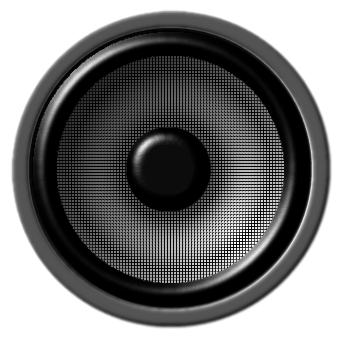 The internal speaker system in the RP401R and F130R is the same with two speakers playing through two 12 watt amplifiers for a total of 24 watts of power. The stereo sound volume coming out of these pianos is surprisingly loud when you want it to be and is more than sufficient for most homes and studios and has been improved over previous models. However, even though the volume is plenty loud, it could use a bit more bass response to get a fuller tone more like the fullness (bassiness) out of a real piano. If you want an even louder and fuller sound in these Roland pianos you could plug in external stereo speaker monitors using the stereo audio output jack on the back of the pianos. In this way you could achieve a much greater instrument volume and fuller tone if you really want that and also blow your window out:). Sometimes an external sub-woofer connected to the piano may be helpful to add more bass response if you should want that, but some of the off-brand sub-woofers I have seen out there would not help much so you need to be careful what you get, so don’t go getting any extra speakers until you contact me first and I can help you. However, the internal audio system with regard to volume on these new pianos will definitely satisfy most situations in homes and classrooms.
The internal speaker system in the RP401R and F130R is the same with two speakers playing through two 12 watt amplifiers for a total of 24 watts of power. The stereo sound volume coming out of these pianos is surprisingly loud when you want it to be and is more than sufficient for most homes and studios and has been improved over previous models. However, even though the volume is plenty loud, it could use a bit more bass response to get a fuller tone more like the fullness (bassiness) out of a real piano. If you want an even louder and fuller sound in these Roland pianos you could plug in external stereo speaker monitors using the stereo audio output jack on the back of the pianos. In this way you could achieve a much greater instrument volume and fuller tone if you really want that and also blow your window out:). Sometimes an external sub-woofer connected to the piano may be helpful to add more bass response if you should want that, but some of the off-brand sub-woofers I have seen out there would not help much so you need to be careful what you get, so don’t go getting any extra speakers until you contact me first and I can help you. However, the internal audio system with regard to volume on these new pianos will definitely satisfy most situations in homes and classrooms.
 In the final analysis, there are many good digital pianos between $1000-$2000US available on the market today. However, for overall good piano playing realism combined with useful educational & fun features, in my professional opinion the RP401R/F130R covers most of the bases in this price range. For me personally, there are always a few things that I wish a manufacturer would have included and in this case an LCD display screen (like what the Casio PX780 offers at $899US)) instead of a simple LED screen would have been useful so you could see and better use the internal features and know what’s going on when you select various functions. Also, a 2-track MIDI recorder instead of a 1-track recorder would have been nice and is especially useful when learning new songs or for students practicing their pieces.
In the final analysis, there are many good digital pianos between $1000-$2000US available on the market today. However, for overall good piano playing realism combined with useful educational & fun features, in my professional opinion the RP401R/F130R covers most of the bases in this price range. For me personally, there are always a few things that I wish a manufacturer would have included and in this case an LCD display screen (like what the Casio PX780 offers at $899US)) instead of a simple LED screen would have been useful so you could see and better use the internal features and know what’s going on when you select various functions. Also, a 2-track MIDI recorder instead of a 1-track recorder would have been nice and is especially useful when learning new songs or for students practicing their pieces.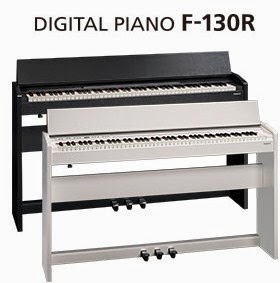 regard to the LED display screen on these two pianos, although the internal function menu is not necessarily as intuitive to navigate using its LED display as compared to a larger LCD screen, at least they have a display because many pianos in this price range don’t have any display at all, including Kawai & Yamaha. So once you get used to it, it becomes fairly easy to use. Overall I think Roland did a very nice job this time in the $1000-$2000 price range, so both of these models should be seriously considered when shopping for a new digital piano. I believe the RP401R is the better buy of the two in terms of looks, design, music stand usability with correct height & built-in sheet
regard to the LED display screen on these two pianos, although the internal function menu is not necessarily as intuitive to navigate using its LED display as compared to a larger LCD screen, at least they have a display because many pianos in this price range don’t have any display at all, including Kawai & Yamaha. So once you get used to it, it becomes fairly easy to use. Overall I think Roland did a very nice job this time in the $1000-$2000 price range, so both of these models should be seriously considered when shopping for a new digital piano. I believe the RP401R is the better buy of the two in terms of looks, design, music stand usability with correct height & built-in sheet
 music holders, access and view to controls/buttons, and the inclusion of a Roland bench with the RP401R….and I do recommend it. However, the F130R (no longer available – F140R takes its place) is a viable option in its price range with regard to its ability to reproduce a good acoustic piano playing experience with some cool digital features. Oh, and one more thing…the Roland factory warranty on these pianos is 2 years labor, 5 years parts with in-home service. That warranty is quite good considering the price range these pianos are in so Roland likely feels confident about the reliability of these pianos, and they do make reliable product based on my experience with them throughout the years as a piano teacher and pro musician. Do your research and your homework before making any buying decisions because there are many digital pianos in this price range to consider, and I would be happy to help you figure it out if you contact me.
music holders, access and view to controls/buttons, and the inclusion of a Roland bench with the RP401R….and I do recommend it. However, the F130R (no longer available – F140R takes its place) is a viable option in its price range with regard to its ability to reproduce a good acoustic piano playing experience with some cool digital features. Oh, and one more thing…the Roland factory warranty on these pianos is 2 years labor, 5 years parts with in-home service. That warranty is quite good considering the price range these pianos are in so Roland likely feels confident about the reliability of these pianos, and they do make reliable product based on my experience with them throughout the years as a piano teacher and pro musician. Do your research and your homework before making any buying decisions because there are many digital pianos in this price range to consider, and I would be happy to help you figure it out if you contact me.
A couple of the other very good digital pianos to consider under $2000 is the 2018 Casio Celviano model AP470 and the Korg C1 Air . These 2 models actually offer more in a some important areas with regard to key action, piano sound, features, and cabinet design in my opinion. The Casio AP470 is $1599 discount price and the Korg C1 Air is currently $1249 discount price. The Casio Celviano AP470 is very impressive when it comes to the actual piano playing experience you get and equally the Korg C1 Air at its current low price is in a completely different league when it comes to the features that it offers as compared to the Roland F140R. Both the Celviano AP470 and Korg C1 Air have long factory warranties and are built by digital piano companies who know what they are doing based on my years of experience with them. Go to the following links below to read my reviews on these two exciting models:
Casio AP470 Review
Korg C1 Air Review
If you want more info on new digital pianos and LOWER PRICES than internet, Amazon, Bundles, and store discounts, please email me at tim@azpianowholesale.com or call direct at 602-571-1864.
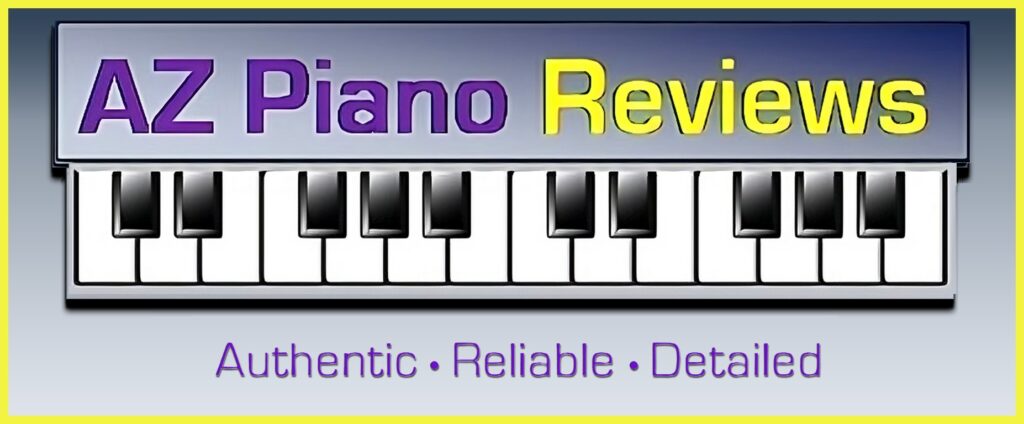




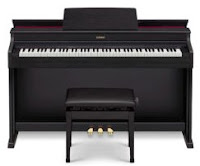


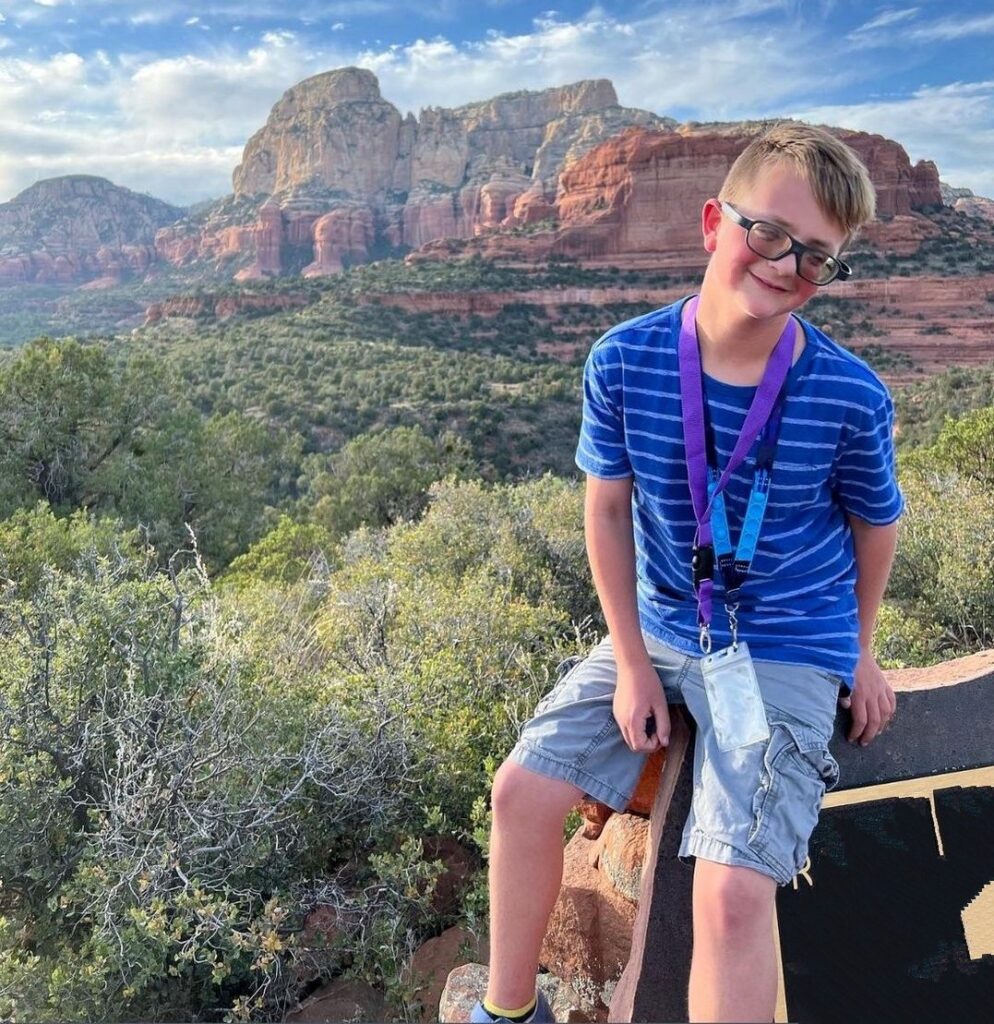
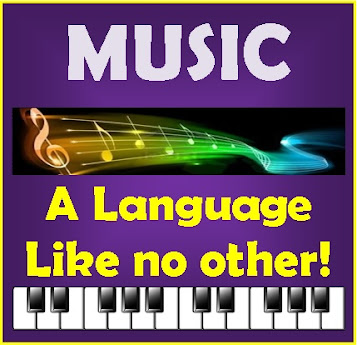
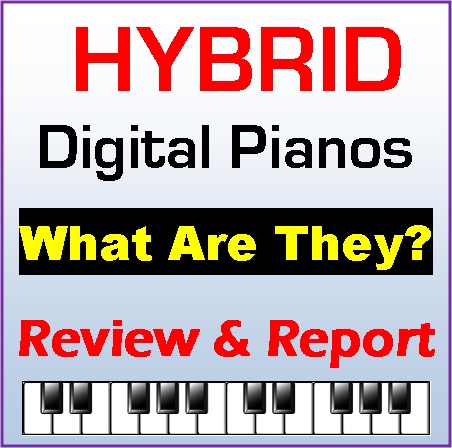
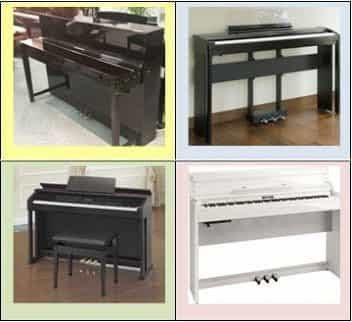
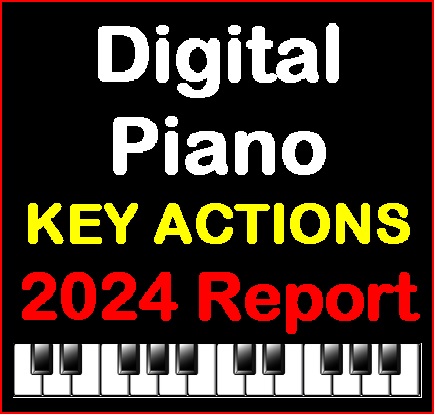
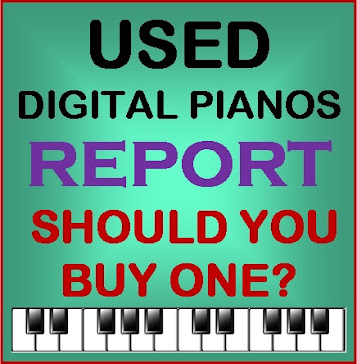
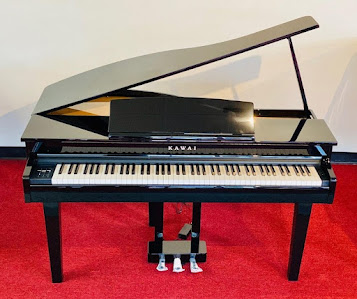
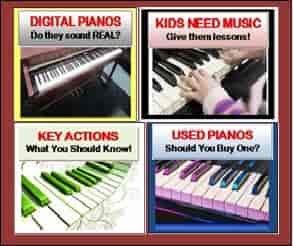
Hello There Mr. Praskins! Can you tell me how does this compare to Casio's AP-450 and the DP-90Se? Thank you in advance.
I cannot help you with your question here since those instruments are in different price ranges and they do vastly different things, especially DP90Se being substantially more money. If you want more specific info you may contact me by email
hello, which one is better (in terms of quality sound, hammer key action) between roland rp401r and yamaha arius yd-162? thank you
Very helpful Mr Praskins!
For a first learner, do you think RP-401R is better than Casio PX-850? Thanks!
Without question, the new Roland RP401R, in my opinion. If you want more detailed info on both pianos including finding out about lower prices, then please email me directly.
Both pianos would be good and would help you learn piano along with some useful built-in digital features. If you want more specific info, please email me directly.
Which has the best sound RP401R or HP503?
They are very close in piano sound realism although the now discontinued HP503 has the stronger total volume output. But adding a small stereo speaker system or low priced monitors to the RP401R would easily make it a much fuller, larger sound over the HP503. It's the new HP504 that has noticeably upgraded piano sound realism over the RP401R
Hi Tim, I have tinkered around as a novice to grade 5 on saxophone and guitar many years ago so have some music reading/playing experience. For my 50th in September I am really looking forward to getting a digital piano and have concluded after much research that my overall preferences are the similarly priced Kawai CN24 /Roland RP401R or the Kawai CN34 / HP504. I think that the Roland is probably my best option with the great looking trainer software but I am strongly swayed by the overall sound of the instrument. There's nothing I can find online that helps me hear these two makes compared to each other and the newness of the Roland models have few opinions expressed at present.
As a new starter on piano I am keen to take a different approach to learning this time around and ignore formal teaching until I feel it's needed. I'm looking to start out learning with my love of blues coupled with anything that takes my fancy using a mix of playing with and without written music to help become more accustomed to improvisation. I use Logic Pro a fair bit (for some game development music) so the midi capability is very important to me. Also of great important is the most realistic feel of the keys between these makes.
I do plan to visit a showroom to hear and feel both makes in the same location but I'll be reliant upon the sales person to support this in terms of playing some music for me. So I would very much appreciate your expertise on which piano you think would give the greatest pleasure?
Many thanks
John
Which piano would you recommed as a first home piano for a 6 year old beginner, Roland F-130R or Yamaha YDP-S51? They both cost about 1050 EUR in Finland.
Hi Tim, Thank you for your marvellous review. Isn't it grand that you help people on the other side of the world (in this case: Amsterdam, NL) to make their consumer's choices? We're a family of three daughters and two adults who love music and whose musical life consists of playing (or abusing) the keyboard, violin, guitar, saxophone, clarinet, English horn, and vocal chords. After two years of playing the Casio CTK-4200, we're on the verge of buying a better piano that would fit our city apartment.
We were considering the Roland RP301R, but now the RP401R has appeared on the stage, as well as the F130R, we (of course) forget about the 301 and turn our eyes to the new stuff. Are the wooden cabinet, the bench and the key placement the only differences between the 401R and the 130R? Then the choice is easily made, which saves us a couple of hundred quid, too. I don't care for the cabinet and find the extra portability of the 130R a plus. Or are there any other technical (or aural )differences between the 401R and the 130R?
Whether for a 6-year old or adult, I believe the new Roland F130R is a superior instrument as compared to the older Yamaha YDPS51 in almost every way. The Yamaha has 2-sensor electronics in its key action whereas the new Roland has 4 sensors under each key (a noticeable advancement) which allows for better key repetition sensing. The key action on the Roland offers more nuanced control due to better touch weight key movement, in my opinion. The pedaling sustain response is more authentic on the Roland and the digital and connectivity features on the Roland far surpass the Yamaha in many ways including the use of built-in educational technology for kids & adults. The Roland control panel offers more intuitive control over functions. The Yamaha has a more powerful and slightly fuller sound because of its larger 40 watt internal speaker system but the Roland is more than adequate for most living arrangements and additional external speakers can always be added should you ever want to do that to get a huge sound. The Roland is a much newer and more advanced technology over the Yamaha so comparing the two instruments may not be a far comparison. Nevertheless, I would recommend the Roland as the better long term investment and it's also less money in US dollars.
You could probably be happy on any of those pianos but obviously they are in different price ranges and are for different purposes, and because of that, it would not be fair to compare them to one another. Key action feel is somewhat subjective although all the models you mentioned to a very good job in their respective price ranges. You just need to decide what is important to you in terms of features and the amount of money you want to spend to get them. If money were not an issue than either the the Roland HP504 or Kawai CN34 would be my choice…although I really do like the interactive ensemble chord accompaniments of the Roland RP401R which the others do not have. I also really like the Kawai CE220 and it's a great choice for a lot of people as compared to the Kawai CN24 and for those people who want to be under $2000.
Hi Tim pleasure. What digital piano you recommend me for a 6 year old girl .. These new Roland or kawai kdp 90 that originally had in mind? Thank you very much.
They could all work for her, depending on the musical goals and abilities, and also the type of music you want to play. Please email me direct and I can discuss further.
Hi Tim pleasure. What digital piano you recommend me for a 6 year old girl .. These new Roland kawai kdp or 90 or if you can economically irias to the cn 34? Thank you very much.
Thanks for the review.
The new F130R seems an interesting alternative in my buying-decision between Casio PX-780 or Kawai ES7/CN34…
Though – with all its features and only this rudimentary user-interface (few buttons and a 3-digit display) it seems to me, you are forced to use the iPad-App to take full controll over the F130R?
Since the Roland-App is only available for Apple-iPad – this for me as Windows/Android owner would meen buying an additional 250-500€ device just for the Roland-piano.
The Casio PX780 does have a better on-board user LCD interface so it is definitely a good competitor and has a nice piano sound, key action, and pedaling response. However there are some people who like the Roland sound, key action, and pedaling better and like the F130R cabinet. As for the other pianos you mentioned, they are substantially more money, especially in the US, so comparing to those models is not a fair comparison. Using an iPad would make it easier to move through the sounds and a few other features of the F130R, but without the iPad it is still OK. Most digital pianos in the F130R price range only have approx 20 tones or less so there is no need for a good (LED or LCD) interface on those instruments. The pros outweigh any cons on the F130R
Both are very good choices but the Kawai KDP90 is quite basic in what it offers for digital features and the Kawai CN34 is substantially more money so it is not a fair comparison. The 6 year old could enjoy any of those pianos but if you want to keep the price down, the either the Roland pianos or Kawai KDP90 would be best
Hello Mr Praskins,
Assuming price is not a concern, which one do you recommend? Roland F-130R or Yamaha CLP 535? Which one is better in terms of sound, feel and reliability? Or, are the differences between them very minimal?
Thanks for your good work.
Regards,
Riz
Hi Riz,
Those two models are completely different pianos in different price ranges. That would not be a realistic comparison. If you want to compare that Yamaha piano to a Roland piano, then the Roland would need to be the HP504. Then you could fairly compare them to each other. I have done a review of the HP504. The HP504 does have some fundamental playing advantages but the Yamaha has advantages in terms of its recording capability.
Hi Mr.Praskins
i'm Jun from Korea.
(i'm not good in english … )
can i ask you a question?
what is the differences between PHA4 STANDARD and PHA4 PREMIUM ?
the number of electronic key sensors ?
pivot length?
(from pivot-point to pront of the key)
[ i mean … fulcrum ]
sorry ,, my english is not good.
Thanks for your good work.
Regards,
Jun
Hello I'm working at grade 5 and need a new digital piano. The two pianos I'm considering are the Roland RP401R or the Yamaha DGX 650. I know there is a difference in price so is the Roland worth the extra money over the DGX. They both appear to have very similar features.
The RP401R compared to the Yamaha DGX650 is like comparing a Lexus to a Toyota Corolla (DGX650). They are both very good, but you just cannot a $799 piano (Yamaha) to a $1600 piano (Roland).
Hi Tim,
thank you for the great article. It is very helpful to me.
You wrote: "I can give you some good recommendations if you don't already have headphones", and I would like to ask you for some headphones recommendations.
Regards,
Wojtek
Hello sir pranskin. I am about to buy a digital piano and I am convinced that the best option for me is a HP504, but can not find any store where I can buy it online. I live in Colombia and I can only import goods from United States. Could you help me? Is there any place where I can make the purchase online? If not so, I would recommend another model ?.
Hi Tim,
Can you tell, whether 401R is really better in quality and features than 301R?
301R atill cost more. Why?
Would you choose the Roland RP401R over the new Kawai CN25 ?
Hello Mr.Pranskin,
we are try to buy the first piano for our daughter.
I trying to decide between
Yamaha YDP 162 and roland RP-401R.
One vendor told me that the yamaha can probably be enough for the first 4 years of learning (after that should probably think about upgrading to a better model)
As to the roland (acording to him) it can easily be used for 6 or more years of learning.
It the Roland that better or is it the same Nikon vs Canon/PC vs Apple discussion where it all cames down to personal preference (bias).
Thanks for your good work.
Regards,
Almeida
How is the F130r compare with yamaha p255
How does the Roland RP-401R compare to the Yamaha CLP-525 (Clavinova)? Both are available in the same price range at local piano stores. I see that the Yamaha has 256 polyphony vs. 128 for the Roland. Is that critical? (Sounds like it is, but yet I am seeing rave reviews for the Roland.) I am looking for something that most closely simulates the touch of a real acoustic piano. Also, how do the speakers compare?
Hi Tim,
Thanks for what you do!
I have a question about the Roland RP401R. It comes with lots of songs and music sheet in its memory. But I wanted to ad some songs in it with their music sheet so I can practice them using my iPad and Roland's Piano partner app. I was able to play midi files from my usb drive, but I wanted to use the Piano partner app instead. Is it possible to load the piano's memory with more songs and practice them using Roland's Piano Partner?
No, this cannot be done. The Piano Partner app is a closed system and you cannot add to it.
Hello Tim, thanks for the great review. I like the accompaniment function very much but I prefer the better sound features of the higher-end Roland models eg HP 506 etc. I am wondering if the Piano Partner app has accompaniments that can be used with the higher-end Roland models. I am reluctant to buy a lower quality piano (ie RP401R — whenI prefer the better sounding HP series) just for the accompaniments…Thank you!
The Roland RP401R definitely is not a lower quality piano in my opinion. It's a very high quality piano given its price range. However, the Roland HP series has upgraded piano sound and key action, but they should given their much higher price range. Unfortunately the HP series does not have the interactive accompaniment nor can the Piano Partner iPad app provide that. The only practical way to get that is to purchase and connect a Roland BK7m auto accompaniment MIDI module to the piano. Then you would be able to get hundreds of great accompaniments controlled by the piano. This MIDI module would add extra cost to the piano purchase, but it would be a good solution for the situation. If you want more details about this combination as well as how to get lower pricing in the US, please email me directly.
I have also this question… 🙂
Interesting question is Roland/Yamaha as same as Canon/Nikkon, Win/Mac, Android/iPhone or Mercedes/BMW… As on some store altought they have booth brands, they only try sell me Yamaha and on another, Roland.
How is the Roland F-130r compare to the clavinova CLP-525, there is a big difference in price, but I wonder if is worth to pay the extra money for the Clavinova.
Thank you.
Although both pianos are quite good in their own way, in my opinion the Roland F130R offers a more realistic piano playing experience along with a substantially better operating system, more usable digital features and functions for music education and fun, and an overall better "bang for the buck." However, the closer comparison would be the Yamaha CLP525 vs the Roland RP401R because the cabinets are much more similar and both come with benches. The RP401R is identical to the F130R except for different cabinets and no bench on the F130R.
can yhe RP401R be used as a midi controller for DAW software instruments? I record my music on a DAW and looking for a digital piano with Midi controller capability. Can it do this via the USB post on the back?
Hi,
Could you please let me know if the roland 401 has a better weighted key action compared to the casio px 860?
Thank you
Hey Tim,
I think I've narrowed down my selections to either the Kawai CE220 or the Roland RP401R. I tried out a CE220 and liked it, but haven't been able to find a RP401R. Does anybody sell these in Arizona?
I'm confused. Roland RP401R and F130R are the best options, but the review of the Kawai ES7 is too????
So in the end, which one to pick?
Peter, These pianos are obviously in different price ranges so your questions need to be considered and answered partially based on the price you can afford to pay. I will be happy to discuss in more detail if you email me directly. Thanks
Hello Mr. Praskin!
I have been following your blog for a while. Based on your good review I bought the Roland F130-R about three months ago. It is a fantastic piano.
Although I live in a house that I can easily play music without disturbing my neighbours there are times when I do repetitive exercises where I don't want to anoy my family.
Can you recommend me good headphones?
I already tried my Bose Comfort Quiet as well the Bose AE2. Both are super comfortable and sounds great when listening to music or watching films.
However, the Comfort Quiet has distortion in sound (not sure if this is because of the noise cancelling technology) whereas the AE2 sound hollow when connecting to the F130R. The piano is in our living room and there are no other noises. Very quiet environment.
Thanks a lot.
Best regards from Switzerland
Thai
Hi Tim.
I recently bought a F130R and couldn't be happier, except for one small thing that is bothering me. On my piano, there's a big difference in the duration the note is sounded after the keys are pressed and lifted on the F# and G key three octaves above middle C. The F# key's sound dies away rather quickly, but the G's sound stays for quite a considerable time longer. It's quite apparent when playing octaves with one of the notes inside this range (like the Aflat Octaves in Maple Leaf Rag for instance). Is this the normal operation of the F130R?
Thanks
Hendrik
go play a real acoustic (grand or upright piano) in that area of the keyboard and listen to what happens when you play those keys. In regular acoustic pianos the same thing you are experiencing on the Roland F130R happens on the F OR F# keys 3 octaves up on acoustic pianos. This is because all strings in a acoustic piano on those keys and all keys below those keys have dampers on them which stops the sound immediately after the key comes up. All high strings above the F or F# (depending on the specific acoustic piano) do not have dampers on the strings and therefore the strings will keep sustaining for a long period of time after you release the key until the note naturally dies out. There are important musical reasons for a real piano to be built in that way, but what you are hearing is normal, natural, and a proper response for both digital pianos (such as your F130R) and acoustic pianos.
Hi Tim! I understand that these models (RP401R & F-130R) are last year's models, but at the beginning of this article, you refer to them as 2015 models. Is there any discernible difference between them? Also, are there any rumors as to when the future models are supposed to come out? I don't know if I should wait for the next one or just get one of these ones.
Just like cars, 2015 models come out in late 2014. Unlike cars, digital piano models do not change every year. The life cycle of a new digital piano is typically about 3 years (give or take) which means that any newer 2015 model digital piano will likely have a few years of life ahead of it. The F130R should be a current model for more years so it is very safe to purchase if that is what you want. If you live in the US and want more info on this specific model or how to buy it for less money than internet, Amazon, etc, please email me direct and I will give you that info.
Thank you for your reply Tim, it was really helpful. Unfortunately I don't live in the US, but I found the F-130R at 999 Euros over here (in Romania), it seems like a really good price for it. Have a great day!
Ah, thank you for the explanation – it was really a very small concern I had.
After a little more than a month's playing time on the F130R I can say with almost complete 100% confidence that it is the best piano I could've possibly bought for my situation and budget.
Thank you for the review and your site – without it I would've ended up settling for the cheaper F20 (which I had doubts about even before visiting your site)!
Tim, do You possibly know if f130R and dp401 has excatly same keyboard?
And if their sound differs in reality (different speakers) ?
I went to the store where I managed to play dp401 and really enjoyed that piano. Within it's price range I didn't find anything better for myself than this, maybe except kawai cn25 which was more expensive (I liked the sensitivity and sound, but the touch was more like plastic). To be honest, even Yamaha 525 nor Roland hp 504 didn't amazed me that much. Especially for it's price. The real master was Kawai cs7 but this is something way to expensive to my needs. So among all the pianos from 500$ up to even 2000$ I really liked these two – cn25 and dp401 but unfortunatelly the f130r wasnt' in the store so I couldn't compare.
Any idea if dp401 and f130r both have really same, ivory like, slightly harsh touch ?
And one more thing – anyone who wants to choose piano for himself – go and try all of them. Reading reviews is just the prelude..
The Roland RP401R would be my choice of the pianos you listed and the RP401R has the identical key action that's in the Roland F130R. As for someone being able to play all of the new digital piano choices locally in their area, it's a nice thought but it cannot be a reality for most people. This is because in many areas in the US, and also in other countries, there may not be a local dealer within 50-100 miles or more who would have the digital piano model that a person wants to see. Also, a beginner novice player does not have the experience to know what constitutes a good key action as compared to a bad key action, or a good piano tone and range to a bad one. Even big US piano/music store chains don't carry some very popular digital pianos like Roland, Kawai, or certain Casio and Yamaha models. So in many cases it is impossible to see these models in person. That is one of the reasons why I write my reviews…because I have seen, touched, played, and examined each digital piano and know what makes one good and one bad. Everyone has slightly different tastes when it comes to piano sound, key action, and pedaling, but there are some models that stand out above the rest in certain price ranges. If a person sticks to those models they will likely be very happy.
Thanks Tim. I'm leaning towards f130r then.
If You have any suggestions what might be also worth considering even after paying a bit more, please let us know. My touch/action/sound favourites are f130r and cn25, so You know my taste.. 😉
Tim,
Thanks for this very helpful review. Much appreciated.
Hi does the Roland f 140 r a polished, or shinny cabinet?
From today, I have my personal RP401R at home!!! 😀
Those 2 models could not be further apart in terms of what they do or how they work. For me, I would likely get the Casio PX560 because it offers so much more in terms of usability and digital features, and it also plays and sounds like a piano too. If you want more info and lower prices than normal internet discounts and live in the US, please email me a request.
exciting!
Thank you for the detailed review. I'm wondering, on the RP401R, can the music rack be folded down flat so that a laptop computer can be placed on top of the cabinet?
The music rack can be easily taken off completely so that something else can be put on top of the piano
The review mentions that the RP401 has two speakers. I'm interested to know where these speakers are located because my experience with downward facing speakers on other models has been disappointing. Is the audio better on Kawai pianos which have four speakers (combination of downward and forward facing)?
Thanks Tim. One more question: does it have nice Fender Rhodes sound? The demo's I've heard on Youtube have a tremolo, auto-pan or phase effect. Is there a good Rhodes sound without these effects?
The 401R speakers are downward facing. It depends which Kawai piano you are talking about? It would be best if you could email me direct if you want to continue the conversation
There are a couple of digital pianos that can do what you ask with regard to the Fender Rhodes sound…but the best one by far is the Kawai ES8. It does an outstanding job in recreation of vintage electric pianos.
if you prefer a stage piano with no built-in speakers then the Kawai MP7 would be my choice.
Thank you again Tim. I am going to look for a Kawai ES8 or perhaps the older ES7. Reading your reviews of those models, I see you also recommend the upward facing speakers.
Hi Tim, I am a 20-year old pianist in India and am considering the Roland RP401R. Could you please tell me how good the touch and key action is? My level of proficiency is around being able to play the basic and intermediate Hanon exercises, Beethoven's Moonlight Sonata, etc. Would you recommend this digital piano to build proper technique further?
I'm considering the RP-401R and F-140. I like the looks of the RP-401 better. Does anyone know if the RP401R can be used with an Android app?
According to Roland specs, the Roland Piano Partner app can only be used with iOS product. However, any MIDI app on Android or iOS can be used with any digital piano using a USB cable and USB output on piano
Hi Tim,
thanks for the great review!!
Do you know the Kawai CN14? Which one would you prefer at this time? The Roland RP401 or the Kawai? Would be great to hear from you.
Thanks,
Tom
Tim, the Kawai CE220 boasts having wooden keys. I am also considering a Roland RP-401R closeout deal. But I don't want a "clunky" keys sound like my old Yamaha YP-635 that started "clunking" after a few years. I know the Roland has more features, but is it "clunky" ? Would you recommend spending the extra $$ on the Kawai, or do you think the wooden key feature is all hype ? Thanks
The Kawai CN14, which is the same piano as the KDP90 available in the US, is a very good piano and has a different key action and piano sound chip than the Roland. You could probably be happy with either one although the Roland has much more digital features (incl USB in/out/audio in/out, etc) and instrument sounds than the CN14. The Roland piano sound iteself is generally brighter and brassier while the Kawai piano sound is a bit more even and mellower. The Kawai sells for less money in the US than the Roland. Just depends what is more important to you.
neither piano is clunky but CE220 is more natural like acoustic piano key action in weight, movement, balance. The Yamaha 635 was a glorified toy with a noisier toy key action…no comparison to the pianos you mentioned.
Hi, Tim, enjoyed your review – 2 questions:
1. We got the RP-500 purchased at COSTCO for a great price but I'm disappointed in the owner's manual. I was hoping for a numerical list of the tones available in "Other". Do you know of one? Roland didn't seem to reference this at all in the manual.
2. It warns not to place it directly on the floor but says not to place it on a deep pile carpet. We don't have carpet in my studio. We can place it on a piece of carpet but didn't understand why the need?
Thanks,
JoyJoye
Hi JoyJoye, there is a full list of tones on Rolands website here: https://www.rolandus.com/support/knowledge_base/202979499
There's no need to put the piano on carpet (I have mine on a hardware floor). The warning about not placing the piano on the floor is just to prevent scratches during assembly (I laid mine out on some cardboard packaging). Once it's assembled/upright, you can place it directly on the floor without carpet.
Hello;
I want to give a hum Gift My Wife and I'm in Doubt Between the Privia PX860 and the Rland RP401R. Recommends fast You Which? I confess that I have certain fear with durability of Casio Products. The Maximum Amount I Want To Spend And Up To $ 1800. Thanks.